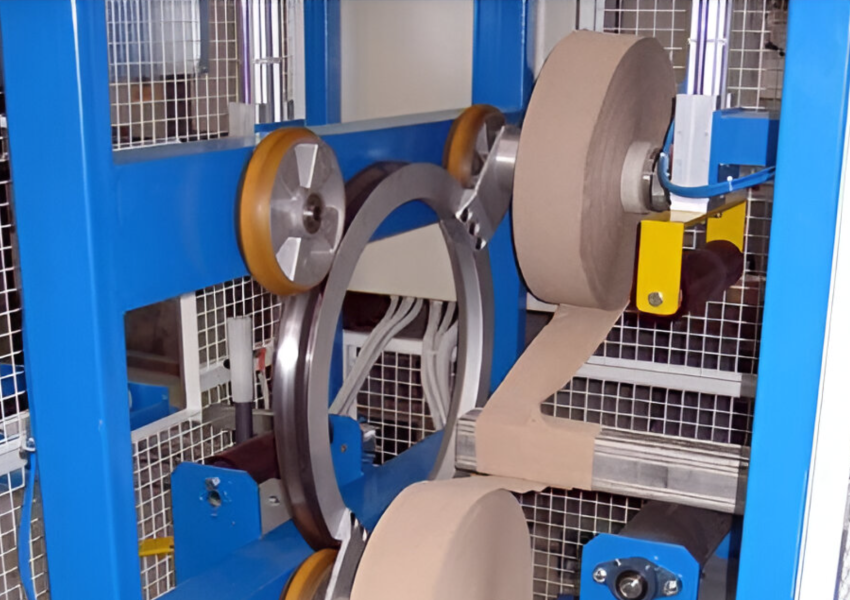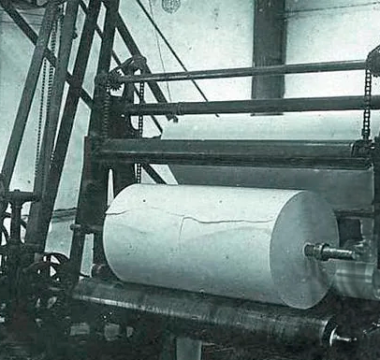What is Crepe Paper?
Before delving into its application in construction, it is important to understand exactly what crepe paper is and what its distinctive characteristics are. Crepe paper is a type of paper that has been treated to give it a wrinkled texture, which provides greater elasticity and strength compared to common paper. This treatment also makes it more flexible, a characteristic that is especially useful in different contexts, including construction.
The process of manufacturing crepe paper involves contracting the paper while it is still wet, which causes the characteristic wrinkles. These wrinkles not only improve its flexibility but also increase its ability to expand and contract without breaking. This makes it a very adaptable material, ideal for applications requiring a high degree of elasticity and protection against wear and tear.
Applications of Crepe Paper in Construction
Surface Protection
One of the most common applications of crepe paper in construction is surface protection. During construction or remodeling, it is crucial to protect surfaces from possible damage caused by tools, construction materials, or even the constant traffic of workers. Crepe paper is ideal for this function due to its ability to adapt to irregular surfaces and its resistance to tears and punctures.
Additionally, its ease of application and removal without leaving residues makes it preferred over other protective materials such as plastic or canvas. For example, crepe paper can be used to cover floors, windows, door frames, and other delicate architectural elements, protecting them from paint, dust, and debris.
Masking in Painting and Decoration
Crepe paper is also widely used in painting and decoration work. Its elasticity allows it to adhere firmly to curved surfaces and corners, ensuring complete coverage without leaving gaps. Additionally, its ability to resist paint penetration makes it an ideal material for masking areas that should not be painted, thus protecting critical surfaces.
During construction, when walls, ceilings, or even wooden structures are being painted, crepe paper can be used to cover the edges and prevent paint from staining other areas. Its easy removal after application ensures that no residues or damage are left on the masked surface, making it ideal for high-precision projects where protection is essential.
Wrapping and Protecting Materials
Construction materials such as pipes, cables, and ducts often need additional protection during transport and storage. Here, crepe paper plays a crucial role by providing a protective layer that is both lightweight and effective.
The ability of crepe paper to fit snugly around irregularly shaped objects and its resistance to tearing ensure that materials are protected from damage. Additionally, its high absorbency is beneficial for protecting moisture-sensitive materials, as it can act as a temporary barrier until definitive protections are installed.
Reinforcement of Temporary Structures
In some situations, crepe paper is used as reinforcement for temporary structures or to cover construction areas in progress. Its ability to expand and contract without breaking makes it ideal for applications where flexible yet strong protection is needed.
For example, in the construction of formwork, where it is crucial that the material used can adapt to changes without compromising the integrity of the structure, crepe paper offers an economical and efficient solution. It can also be used as an additional layer in temporary panels to protect against weather and dust.
Use in Roofs and Walls
Although it may seem surprising, crepe paper has also been used in the construction of roofs and walls, especially in projects requiring an ecological and sustainable approach. Its ability to absorb and release moisture in a controlled manner makes it an excellent material for regulating humidity in enclosed spaces, thus protecting internal structures from moisture damage.
In some cases, crepe paper is used as part of insulation systems or as a vapor barrier. Its installation is simple and does not require special tools, making it an attractive option for green construction projects. Additionally, its recyclable nature aligns with sustainable construction practices, which are increasingly in demand in the industry.
Benefits of Crepe Paper in Construction
The use of crepe paper in construction offers multiple benefits, some of which we have already touched upon. Below, we summarize the main advantages of this material:
- Protection: Crepe paper is excellent for protecting surfaces, materials, and structures during construction.
- Economy: Crepe paper is an affordable material, allowing cost reduction in protection and reinforcement without compromising quality.
- Versatility: Its ability to adapt to different shapes and its strength make it useful in a wide range of applications where protection is key.
- Easy Application: It does not require special tools for installation, reducing time and facilitating its use in the field.
- Recyclability: Crepe paper is a recyclable material, making it a sustainable option for construction projects.
- Absorption and Moisture Control: These qualities are essential in applications that require protection against moisture, especially in indoor environments.
Conclusion
At Arrosi, we are proud to see how our crepe paper has found a place in the construction industry, a sector where quality and protection are paramount. From surface protection to its use in roofs and walls, crepe paper has proven to be a versatile and reliable material.
As construction moves towards more sustainable and efficient practices, we hope that crepe paper will continue to gain recognition as a practical and eco-friendly solution. In a world where innovation is key, we are excited to see how crepe paper will remain an integral part of modern construction, offering the protection that projects require.




